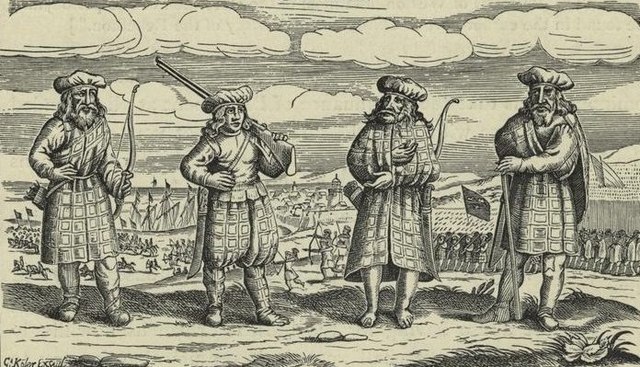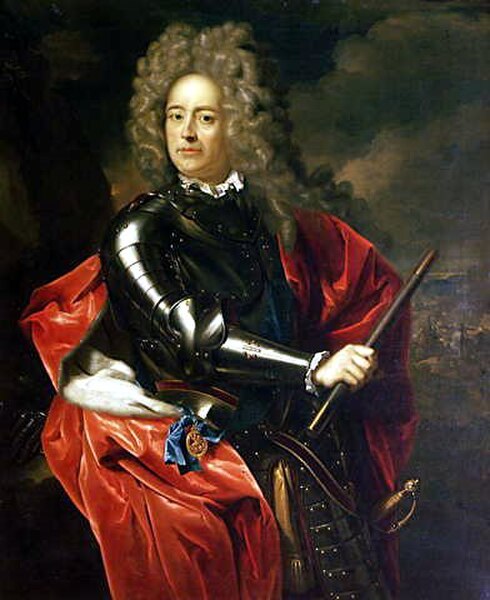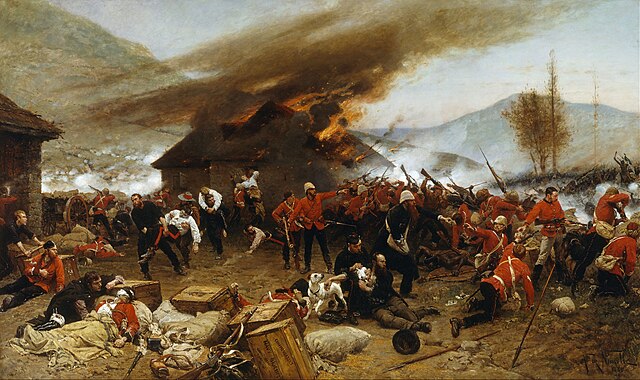The Royal Scots, once known as the Royal Regiment of Foot, was the oldest and most senior infantry regiment of the line of the British Army, having been raised in 1633 during the reign of Charles I. The regiment existed continuously until 2006, when it amalgamated with the King's Own Scottish Borderers to become the Royal Scots Borderers, which merged with the Royal Highland Fusiliers, the Black Watch, the Highlanders and the Argyll and Sutherland Highlanders to form the Royal Regiment of Scotland.
Contemporary engraving of Scots mercenaries serving in the Thirty Years War
The Dutch raid on the Medway in 1667; the regiment was based nearby at the Chatham naval base
Tangier ca 1670; the regiment was part of the Tangier Garrison, 1680–1684
Soldier of the Royal Regiment of foot, 1742
The British Army is the principal land warfare force of the United Kingdom, British Overseas Territories and Crown Dependencies, a part of the British Armed Forces along with the Naval Service and the Royal Air Force. As of 1 January 2024, the British Army comprises 75,166 regular full-time personnel, 4,062 Gurkhas, 26,244 volunteer reserve personnel and 4,557 "other personnel", for a total of 110,029.
Lord Protector Oliver Cromwell
Lord General Thomas Fairfax, the first commander of the New Model Army
John Churchill, 1st Duke of Marlborough, was one of the first generals in the new British Army and fought in the War of the Spanish Succession. He was a noted ancestor of Sir Winston S. Churchill, later famous Prime Minister during World War II.
In the 1879 Battle of Rorke's Drift, a small British force repelled an attack by overwhelming Zulu forces; eleven Victoria Crosses were awarded for its defence.








